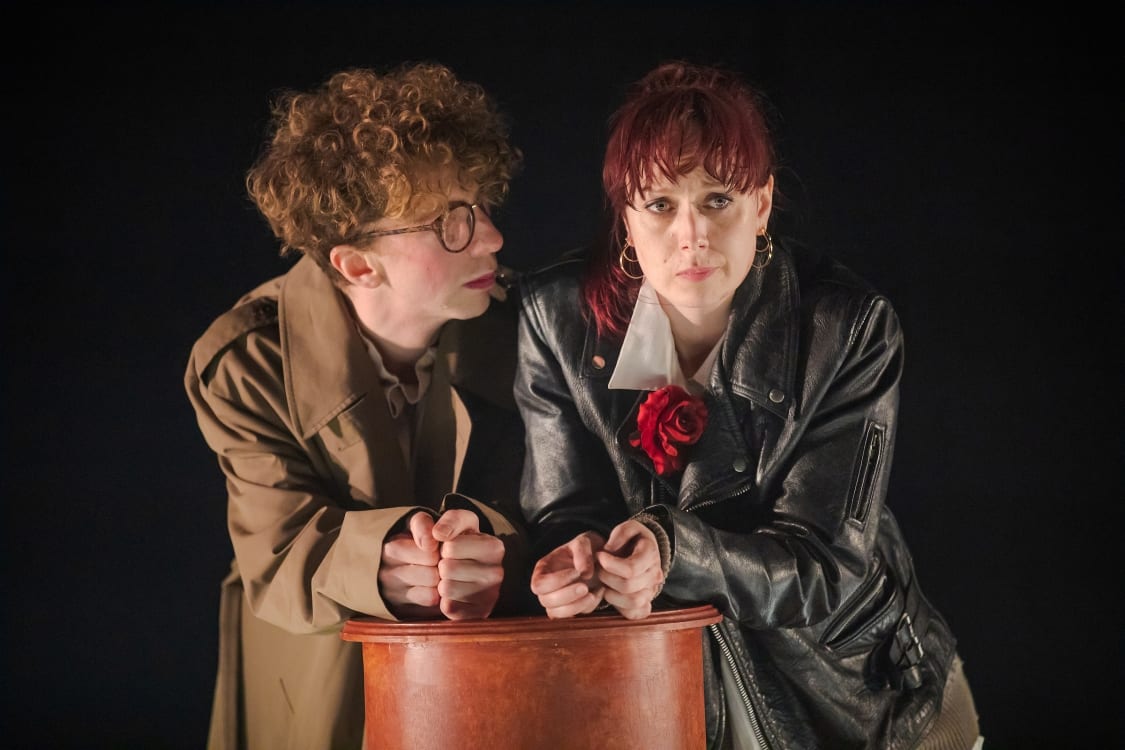Jo Clifford’s vital re-envisioning of The Taming of the Shrew examines the darker underbelly of current explorations of gender and sexuality. In an essay contemplating sexism in science fiction, journalist and author Laurie Penny observed that ‘the types of future we can conceive of say a great deal about the limits of our political imagination’. Though in most circumstances the connection between an Elizabethan comedy and futuristic dystopias may be tenuous at best, in this production Jo Clifford has turned Shakespeare’s play into a striking feminist dystopia, while also giving it a glorious punk revamp.
Here Katherina, the titular Shrew, has become a sullen boy called Kate (Matt Gavan), who is brutally wooed and married off to Scarlett Brooke’s Petruchio. Katherina’s soft-spoken sister, Bianca, has, for her part, been turned into a sexually provocative youth played by François Pandolfo, and is the object of desiring, lustful female gazes. Pandolfo’s undulating Bianca brings a sexy energy to the role, and Scarlett Brookes’ domineering, rampant Petruchio carries a great part of the production’s lingering sense of discomfort. Matt Gaven’s interpretation gives body and voice to Kate’s standoffishness and growing disorientation and alienation. The women who woo, love, and f**k Kate and Bianca turn around the ring-shaped stage to appraise and gape at them. Each woman introduces herself to the audience in a few words to the sound of an electric guitar played by Hannah Jarrett-Scott, who plays Lucentio.

Giving the roles of the suitors, Petrucchio, Lucentio, and Gremio, to women, the play manages to lose nothing of the brutality of Shakespeare’s script. Gender-swapping is not a new way to interpret Shakespeare; in fact, it’s practically become a standard when performing The Taming of the Shrew. Far from softening the edges of Petrucchio’s repeated aggressions, Clifford’s rewriting gives them an additional sinister tinge. If in each of us lies a Petrucchio and a Kate, as the characters suggest, are women just as prone to misogyny and violence as Shakespeare’s patriarchs? Far from endorsing the naïve discourse of girl power, Jo Clifford’s rewriting lets her women embrace their darkest, most vengeful instincts, all while accompanied by the moody soundtrack of textured song covers (such as Martha Wainwright’s ‘Bloody Mother F***ing A**hole’). As if to support the play’s overt metatheatrical interrogations, the set – a ring – functions as a stage within a stage or an exhibition space, in which the play’s structures of power are laid bare. When the play comes to an end and its chaos has finished washing over us, we are left to explore our own base instincts.
Carrying on the success of last year’s collaboration between the Sherman and the Tron Theatre, productions such as these give a lot to hope for future Scottish/Welsh theatrical alliances.

